The Rozentāls living room
The centre of the home of Janis Rozentāls was the living room. The family used it every day, but sometimes this simple room became an elegant salon.
Janis Rozentāls' "At the Table," showing Elli Forssell-Rozentāls and her daughter. The illustration was for the textbook "School friend," 1907.
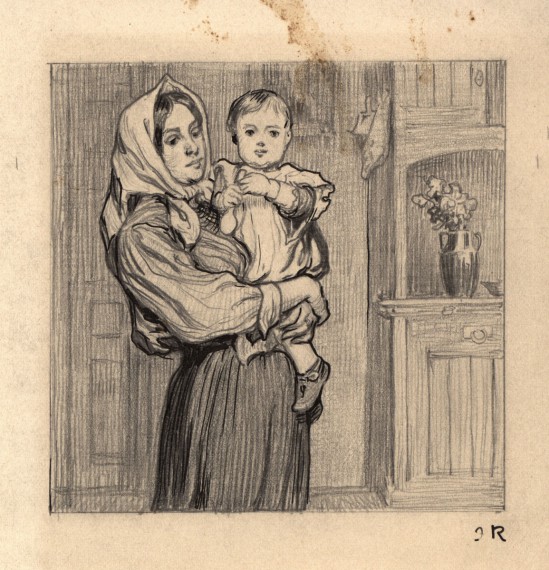
Janis Rozentāls' "Mother and Child," showing the living room of the Rozentāls family, early 20th century
After moving into the 9th flat of the building at Alberta Street 12, Rozentāls filled the apartment with furniture, paintings and valuable interior design objects that he had designed himself. The artist particularly focused on the living room, where the design involved the rational and national romantic Art Nouveau characteristics.
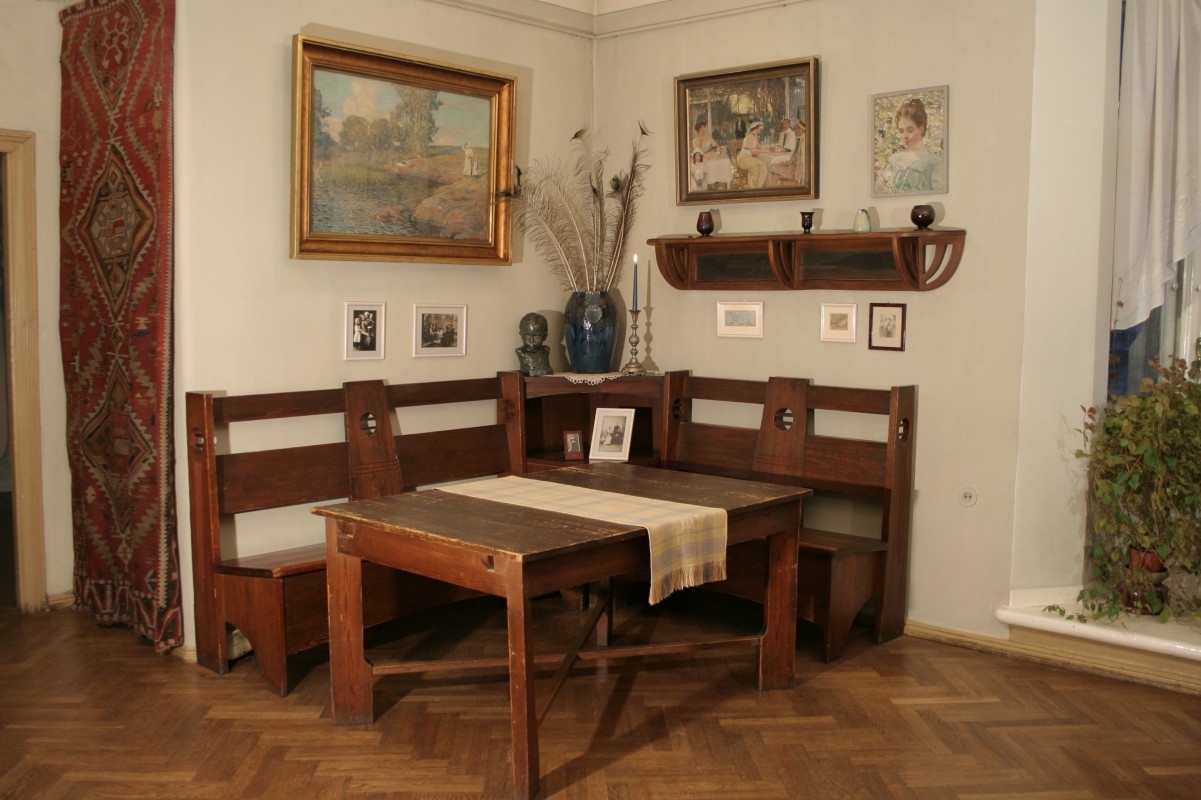
The Rozentāls living room, dining table and corner bench, 2006.; photo by Gvido Kajons
The dining table and the corner bench that was solid and heavy. These furnishings were borrowed from the homes of Latvian and Finnish farmers
The upper inclined backs had forms and parallel line rhythms that indicated the presence of the spirit of Art Nouveau.
After his marriage to Elli in the spring of 1903, they lived in Kalnciema Street for a while. The building was owned by the family's friends, Baltic German artists Bernhard Borchert and Eva Borchert-Schweinfurth. The shelf is decorated with a painting by Bernhard Borchert, and it was presented to the Rozentāls couple as a wedding gift.
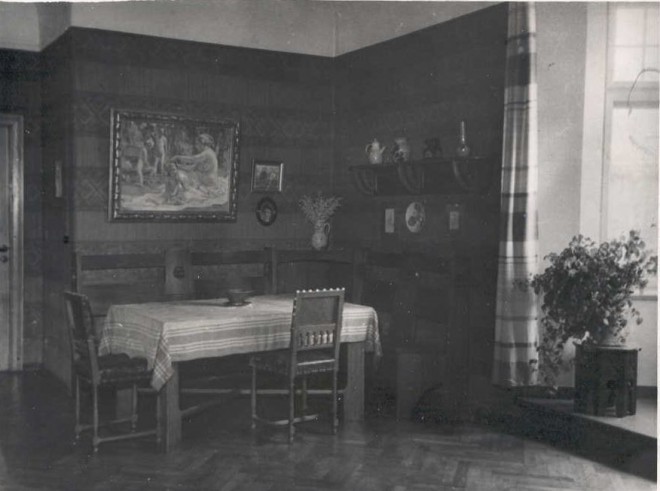
The Rozentāls living room, dining table and corner bench, 1940s
Oto Skulme, who was a student at Rozentāls’ private art studio, remembered one of the musical events that the family organised. He mentioned the “Finnish wooden corner bench” and the colourful nature of the room: “There were lots of items from Finland, including blankets, tablecloths and ornate pillows on the wooden corner bench. On the wall was a fairly large painting by Janis Rozentāls, “Arcadia,” as well as several summer studies showing his wife, his wife with the children, the heads of children and a few landscapes from Finland.”
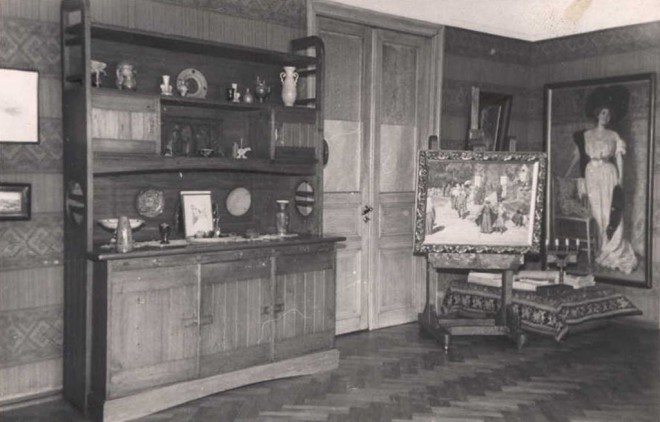
The Rozentāls living room, dining table and corner bench, 1940s
The dining table was set beautifully on an everyday basis and during parties. Translator Ieva Celmiņa remembers visits to the Rozentāls family when she was a child. “Two servants in light blue dresses and white aprons brought trays into the room,” she recalled. “They were different than servants at other houses, because they served guests with white aprons and black dresses. There were plates on one tray, with food on the other one ˗ roast veal, brown roast potatoes and a brown sautéed dish. I remember that so well because I saw something related to Rozentāls ˗colours!”
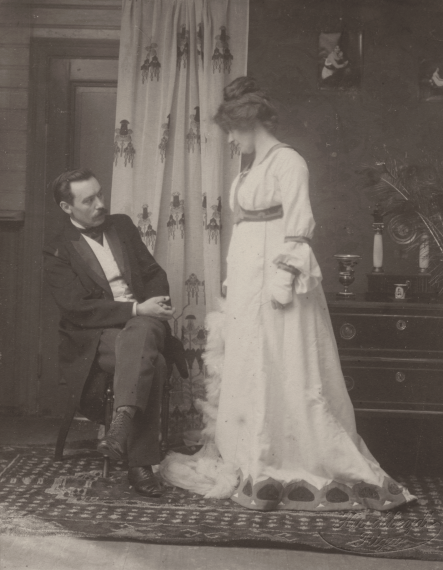
Janis and Elli Rozentāls, 1905.; photo by Ernst von Hirschheit
“The most vivid impression for guests, however, related to musical and poetic performances by Elli Rozentāls, who sang Finnish and Swedish songs. Malvīne Vīgnere-Grīnberga sang Latvian folksongs, while actress Biruta Skujeniece recited poems,” Ieva Celmiņa remembers.

